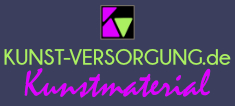James Turrell Opens at the Guggenheim Museum in June
Frank Lloyd Wright’s iconic rotunda to be transformed into a light installation in the artist’s first solo exhibition in New York in more than 30 years
Exhibition: James Turrell
Venue: Solomon R. Guggenheim Museum, 1071 Fifth Avenue, New York
Location: Rotunda floor; Annex Levels 2 and 5; High Gallery
Dates: June 21–September 25, 2013
(NEW YORK, NY – May 14, 2013) — From June 21 to September 25, 2013, the Guggenheim Museum presents James Turrell, the eminent American artist’s first solo exhibition in a New York museum since 1980. The exhibition features a major new site-specific work, Aten Reign (2013), which represents one of the most dramatic transformations of the museum ever conceived—reimagining the rotunda of Frank Lloyd Wright’s iconic building as one of Turrell’s luminous and immersive Skyspaces. Opening on the summer solstice, the installation will fill the museum’s central void with shifting natural and artificial light and intense, modulating color, creating a dynamic perceptual experience that exposes the materiality of light. Including select early works in addition to the monumental new installation, James Turrell considers the dominant themes explored by the artist for nearly fifty years, focusing on his investigations of perception, light, color, and space and the critical role of site-specificity in his practice.
James Turrell is one of three concurrent, independently curated presentations of the artist’s work in summer 2013. Together, the exhibitions at the Solomon R. Guggenheim Museum, New York, the Museum of Fine Arts, Houston, and the Los Angeles County Museum of Art celebrate Turrell’s groundbreaking career and form a three-part retrospective across the country.
James Turrell is curated by Carmen Giménez, Stephen and Nan Swid Curator of Twentieth-Century Art, Solomon R. Guggenheim Museum, and Nat Trotman, Associate Curator, Solomon R. Guggenheim Museum.
James Turrell is organized by the Solomon R. Guggenheim Foundation, New York, in conjunction with the Los Angeles County Museum of Art and the Museum of Fine Arts, Houston.
The Leadership Committee for James Turrell is gratefully acknowledged for its generous support, including Lisa and Richard Baker, Pace Gallery, Almine Rech Gallery, Fundación Almine y Bernard Ruiz-Picasso para el Arte, 425 Park Avenue/Simone and David W. Levinson, and those who wish to remain anonymous.
Additional support is provided by the Affirmation Arts Fund.
Exhibition Overview
Since the late 1960s Turrell has conceived a wide-ranging yet unified body of work that explores his specific aesthetic concerns: the use of light as a material that affects the medium of perception; a refined formal language based in geometry; an interest in the optical and emotional effects of color; an interplay between the solid and the ethereal; and an emphasis on quiet, almost reverential atmospheres of introspection and reflection. Building on his early research into sensory deprivation—in particular the Ganzfeld effect, in which viewers experience disorienting, unmodulated fields of color—Turrell pursues a state of reflexive vision that he calls “seeing yourself seeing,” in which one becomes aware of the function of one’s own senses and of the material aspects of light.

Aten Reign, 2013
Daylight and LED light, dimensions variable
© James Turrell
Installation view: James Turrell, Solomon R. Guggenheim Museum, New York, June 21–September 25, 2013
Photo: David Heald © Solomon R. Guggenheim Foundation, New York
„Light is a powerful substance,” Turrell explains. “We have a primal connection to it. But, for something so powerful, situations for its felt presence are fragile. . . . I like to work with it so that you feel it physically, so you feel the presence of light inhabiting a space,” he says. “My desire is to set up a situation to which I take you and let you see. It becomes your experience.“

Aten Reign, 2013
Daylight and LED light, dimensions variable
© James Turrell
Installation view: James Turrell, Solomon R. Guggenheim Museum, New York, June 21–September 25, 2013
Photo: David Heald © Solomon R. Guggenheim Foundation, New York
In Aten Reign, daylight enters from the museum’s oculus, streaming down to light the deepest layer of a massive assembly suspended from the ceiling of the museum. Using a series of interlocking cones lined with LED fixtures, the installation surrounds this core of daylight with five elliptical rings of shifting, colored light that echo the banded pattern of the museum’s ramps. As is typical of Turrell’s work, the apparatus that creates the effect is mostly hidden from view, encouraging viewers to interpret what they see by means of their own perception. The work promotes a state of meditative contemplation in a communal viewing space, rekindling the museum’s founding identity as a “temple of spirit,” in the words of Hilla Rebay, the Guggenheim’s first director and a pioneer in the promotion of nonobjective art.

Aten Reign, 2013
Daylight and LED light, dimensions variable
© James Turrell
Installation view: James Turrell, Solomon R. Guggenheim Museum, New York, June 21–September 25, 2013
Photo: David Heald © Solomon R. Guggenheim Foundation, New York
Offering a complement and counterpoint to Aten Reign is a selection of Turrell’s early works, some drawn from the museum’s Panza Collection and others on loan. These pieces offer a sample of the artist’s various installation types and link the new project to his work of the 1960s and 1970s. In Afrum I (White) (1967), one of Turrell’s earliest Cross Corner Projections, visitors encounter a glowing cube floating in the corner of a room; what first appears to be a solid object resolves upon closer inspection into simple planes of light. The Single Wall Projection Prado (White) (1967), on the other hand, seems to dematerialize space, dissolving the wall and creating a passage to an unknown space beyond. Alongside these projections, selections from the related etching portfolio First Light (1989–90) explore how the aquatint technique can invoke qualities of radiance. In the Shallow Space Construction Ronin (1968), light emanates from behind a vertical architectural fissure, appearing as a solid plane and dematerializing the darkened wall. Iltar (1976), one of his Space Division Constructions, creates an effect that may be read alternately as a flat panel of color hanging on a wall, a foggy void, or an opening into a separate chamber. These works connect Aten Reign to the artist’s earliest experiments with light and space and offer visitors a variety of perceptual experiences.

Aten Reign, 2013
Daylight and LED light, dimensions variable
© James Turrell
Installation view: James Turrell, Solomon R. Guggenheim Museum, New
York, June 21–September 25, 2013
Photo: David Heald © Solomon R. Guggenheim Foundation, New York
About the Artist
Born in Los Angeles in 1943 to a Quaker mother and a father who was a school administrator, James Turrell attended Pomona College, where his studies concentrated on psychology and mathematics. He later received a master’s degree in Art from Claremont Graduate School. Turrell’s work has been widely acclaimed and exhibited since his first showing at the Pasadena Art Museum in 1967, which established him as a leader in the nascent Light and Space Movement in Southern California. His work has since been presented at major venues including the Stedelijk Museum, Amsterdam (1976); the Whitney Museum of American Art, New York (1980); the Israel Museum (1982); the Museum of Contemporary Art, Los Angeles (1984); MAK, Vienna (1998–99); the Mattress Factory, Pittsburgh (2002–03); and the Kunstmuseum Wolfsburg, Germany (2009–10); and was included in the 54th Venice Biennale (2011). In addition to the exhibitions at the Solomon R. Guggenheim Museum, New York, the Museum of Fine Arts, Houston, and the Los Angeles County Museum of Art in summer 2013, Turrell’s art is on view in a solo exhibition at the Academy Art Museum, Easton, Maryland. The artist’s work is represented in numerous public collections including the Tate Modern, London; the Los Angeles County Museum of Art; the Museum of Fine Arts, Houston; the Solomon R. Guggenheim Museum, New York; and the Israel Museum, Jerusalem. Turrell has created more than seventy Skyspaces in the Americas, Europe, and Asia, with the first made in 1974 for Count Giuseppe Panza di Biumo at his home in Varese, Italy.
Exhibition Catalogue
James Turrell is accompanied by a fully illustrated, 128-page catalogue detailing the production of Aten Reign (2013) and situating it in the context of the artist’s career. The catalogue features essays by Carmen Giménez and Nat Trotman, the exhibition curators, and Arthur Zajonc, emeritus professor of physics at Amherst College; this writing explores the significance of the new installation in terms of Turrell’s ongoing relationships with architecture, the landscape, and perceptual experience. Designed by 2×4, the book will be available in hardcover at the museum store and online at guggenheimstore.org.

